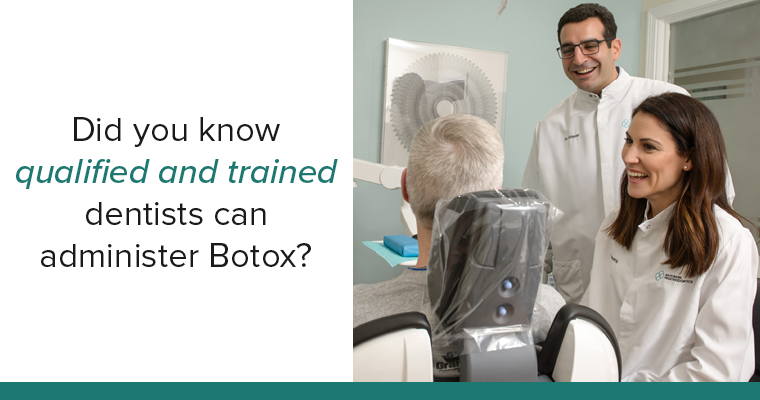Can You Really Use Botox to Treat Migraines? Are There Side Effects?

Are you one of the many people who suffer from migraines?
If so, you have our sympathies. Migraines are no joke!
Maybe you’ve heard or read Botox can be an effective treatment for migraine pain and you’d like to try it.
However:
You may have some questions about it.
Does it really work? Does Botox for migraines have side effects?
Read on to find the answers to those questions and other important information about Botox you need to know before you decide.
First, what is Botox?
Botox is an FDA-approved therapeutic injection for the treatment of chronic migraine and remains the only treatment approved for this specific purpose.
You’ve probably heard of using Botox to remove wrinkles. Many of these cosmetic patients reported to their treatment providers that the injections also helped relieve their migraines. When looked at more closely, doctors found because of the way Botox works in relaxing muscles, it was an effective treatment for headache pain.
From there, they began using it for pain therapy.
How does Botox work?
When injected in the muscles, Botox acts as a neurotoxin, a nerve blocker. It prevents the muscles from contracting and also acts as a roadblock, stopping pain signals from your brain to nerve endings.
Because of these abilities, Botox is used for both cosmetic and therapeutic reasons.
For cosmetic enhancements, Botox is commonly injected around the eyes and mouth to relax the muscles and smooth away fine lines and wrinkles.
For therapeutic use, Botox is used on identified trigger points (areas of muscle tension that can lead to pain) to relax the muscles and ease the pain. For migraines caused by muscle tension, Botox has proven to be very effective.
How effective?
Does Botox relieve migraine pain?
Studies have shown Botox helped those who suffered from chronic migraine headaches to have more pain-free days each month, and they were able to miss fewer days at work.
For those who suffer from chronic migraines, that is a small miracle!
A regular course of Botox injections works as a preventative treatment, stopping headaches before they start!
When it comes to effectiveness, the study found that the more frequent the headaches, the better the result.
We recommend Botox for patients who:
- Have a history of migraine headaches
- Have tension-type headaches for 15 or more days a month, and eight of these are migraines
Botox is not recommended for patients who:
- Experience headaches less than 15 days a month
- Suffer from another type of headache, such as cluster headaches
Dr. Khayat and Dr. Becerra have used Botox to treat pain in their patients effectively.
“I received trigger point injections. The results were amazing! After suffering for years, I finally had relief from my pain. The results from the injections were better than I could have ever hoped for.” – MaryBeth K. (Actual patient of South Shore Prosthodontics)
Ok, so it works.
But what about the side effects?
Does Botox for migraines have side effects?
Botox treatment is sought by many because it is safe and effective, and side effects are not common.
When experienced, they usually involve itching, redness, bruising, or swelling at the injection site. These symptoms will often clear up within a few days.
In very rare cases, more serious side effects have occurred, such as a patient who has an unknown allergy to the Botox formula. If that should happen, contact your doctor immediately.
What about the long-term effects of repeated injections?
The study mentioned earlier followed patients who had regular treatment with Botox for headaches over three years. It found that treatment with Botox remained safe and effective and did not present any increased side effects.
For the best results, after treatment, it is important to avoid:
- Touching the injection site – Don’t rub or massage the area for 24 hours. You could cause the Botox to spread to nearby muscles
- Strenuous exercise
- Alcohol
- Facial treatments for at least 24 hours
- Taking blood thinners
We mentioned earlier that the procedure takes only about ten minutes. So what happens during a Botox treatment?

What does treatment with Botox involve?
First, you need to be sure to choose a doctor who has training in administering therapeutic Botox.
Both Dr. Khayat and Dr. Becerra have completed intensive training at the American Academy of Facial Esthetics to provide Therapeutic Botox and Trigger Points Treatment.
Although the actual treatment takes only minutes, our Hingham dentists need to find out some information about you before they begin.
Step 1: Consultation – A comprehensive muscular examination of the head and neck will be completed to identify any trigger points. Also, be ready to answer questions such as:
- How often do your headaches occur?
- How severe are your symptoms?
- What, if anything, seems to improve your symptoms?
- What, if anything, appears to worsen your symptoms?
- Does anyone else in your family have migraines?
Step 2: Treatment – Treatment will begin right away in the targeted muscles and trigger points. You should start to see results within two to ten days.
Step 3: Follow-up Appointment – Results are reassessed in about two weeks, and we can make adjustments if need be.
Step 4: Three Months Later – The effects of Botox will last for about three months. We will set up a regular schedule of appointments at three-month intervals to provide consistent pain management.
Is therapeutic Botox treatment painful?
Not really. A tiny needle is used for Botox injections. You may feel a momentary pinch or burning sensation that will quickly disappear.
A series of injections are usually given during each treatment, and it typically takes 10-15 minutes to complete.
Most patients can return immediately to their regular routine.
Can medication be used along with Botox to control headache pain?
Yes, it can!
Oral medications prescribed for migraine pain will not interfere with your Botox treatment and can be used in conjunction with therapy.
Always be sure, though, to let your doctor know about medications you are taking during your treatment.
Let us help you find real pain relief
As we mentioned earlier, we truly sympathize with those who have to deal with the pain caused by chronic headaches and migraines.
We’ve seen how debilitating such pain can be to our South Shore area patients in Hingham, Hanover, and Weymouth. We have helped them to find real relief from their pain, and we are confident that we can help you!
Therapeutic Botox for migraines has little to no side effects, and it’s fast and effective.
Just fill out the consultation request form, and we’ll do the rest.
Or, if you would like to talk with us directly about Botox for migraines you can:


